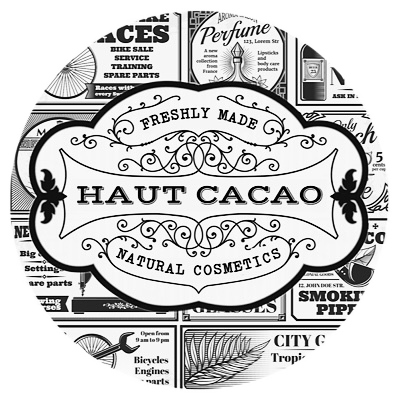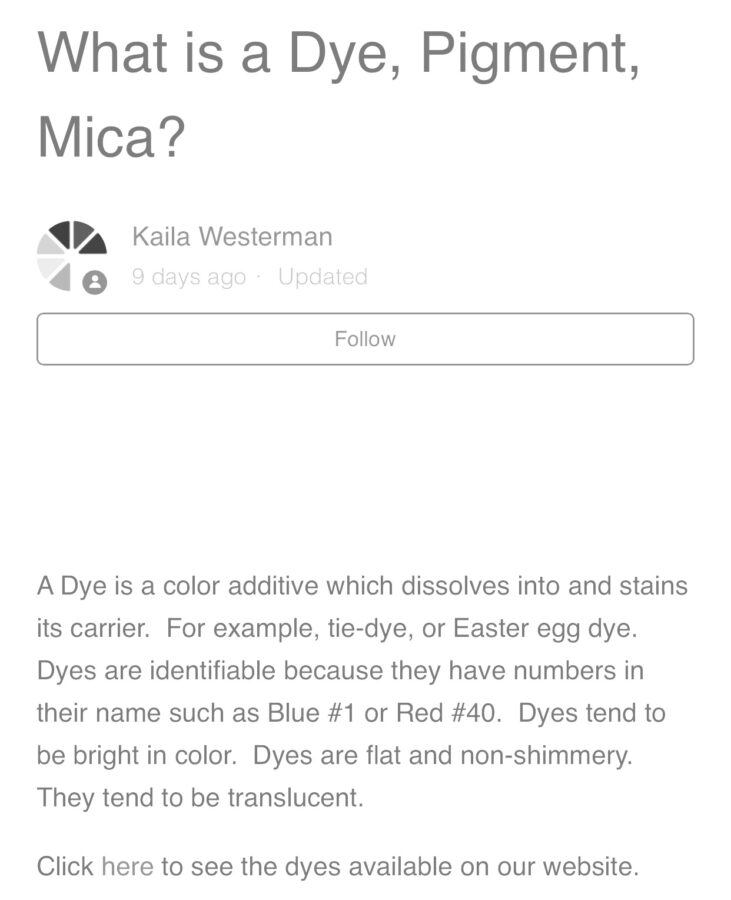Almost every single eyeshadow, blush, bronzer, highlighter, and lip product that advertises being natural has mica listed as the main ingredient. I wanted to know exactly what it was before I blindly put it into my own makeup line, especially since I was reacting to even the most natural makeup at the time. There are two types of mica, naturally mined mica vs synthetically made mica.
In both cases, I found that the main health concern for mica exposure is pneumoconiosis, or disease of the lungs caused by inhalation of dust, and characterized by coughing, inflammation, and fibrosis. The most at risk for this are of course the miners onsite digging the mineral out of the depths of the earth, and the labourers on the factory line dropping mica into mass produced products for 8 hours a day. Since mica is ground into a nano-particle, its composition allows it to penetrate through layers of skin and even seep into the lungs.
Currently, there is no required testing for the amount of mica we can ‘safely’ be in contact with. So when it comes to answering the question ‘is mica safe for skin?’ I believe the answer is – we don’t know. It is important to remember that just because something is natural, does not necessarily mean it is safe. Plenty of toxins are ‘natural’ and we would never dream of putting them on our skin.
the problems with natural mica
By far, the largest deposits of mica in the world are in India, and specifically in the remote, impoverished states of Jharkand and Bihar in the northeastern part of the country. This region has been dubbed the ‘Mica belt’, and accounts for roughly 25% of all mica sourced in the world.
Unfortunately, the Mica mining industry in these areas are supported by illegal child labor and the working conditions are dangerous and even fatal. Children as young as 5 are put to work deep into the crevices of the earth, hammering at unstable rock and exposing themselves to poisonous scorpions and snakes. In 2016, the death of seven children in two months caused investigation into the supply chain of Mica in the Mica belt. For the past 2 years, efforts have been made to legalize Mica mines to improve and regulate working conditions and mitigate child labor concerns. Enforcement of regulations are slow moving at best, and with the number of children born undocumented in northeastern India every year, we will likely never have an accurate account of what the Mica mining supply chain looks like there.
If you have not read my post ‘mica – beyond the ethical concerns‘, it goes into more detail on how mined mica not only does not provide any nutritional benefit for the skin, it can create microscopic cuts on the surface of the skin because of its shape.
what is synthetic mica?
In order to avoid other dangerous trace minerals and in response to the children and communities being exploited so we can achieve a pretty, even shimmer, many cosmetic and personal care companies have started using Fluorphlogopite, or organic fluorine substituted Mica. Fluorine is a natural non metal element, it is very reactive so it does not exist as a free element. It is the first member of the halogen group in the Periodic Table. it has special chemical and physical properties, the most being poisonous.
PFAS (fluorine-based substances) are a group of manufactured chemicals that have been used and mass-produced in North America for decades, dating back to the 1940s. PFAS are used in a wide variety of industrial and commercial applications. They are ubiquitous & persistent and linked to health effects like cancers, cardiovascular disease, immune problems, and reproductive issues.
Because PFAS chemicals are ubiquitous, I expected to find them in green beauty cosmetic products, but I was surprised at the amount of contamination that was discovered. The levels presented in green beauty cosmetics were similar to what was discovered in conventional makeup. I am sharing theses findings with you here with the hopes that these companies will work hard behind the scenes to fix this problem. These chemicals can even be found in 24% of toilet paper! An EPA-certified laboratory tested for fluorine, which is a marker for PFAS “forever chemical” compounds.
- 24% of toilet paper tested at an EPA-certified lab had indications of PFAS “forever chemicals”, while 76% of toilet paper tested did not. In other words, 4 out of 17 products contained indications of PFAS ‘forever chemicals’.
- According to this lab, levels of fluorine, a marker for PFAS, were found between 10 parts per million (ppm) to 35 parts per million (ppm).
- 50% of the products with detectable levels of organic fluorine were bamboo products. In other words, 2 out of 4 detectable products were made from bamboo, one was made from conventional wood pulp, and one was made from recycled paper.
If pfas are in makeup and toilet paper – even the most natural alternatives, they are in many more products that are not clearly listed as pfas-free. If fluorine is used to manufacture synthetic mica, it is also a marker for forever chemicals being in synthetic mica. There are over 12,000 different chemicals in the PFAS chemical class (including PFOA & PTFE), and because there are so many of them, they are incredibly hard to identify and test for. In fact, it’s only really possible to identify about 100 or so in a really good commercial laboratory. The biggest problem with PFAS is their staying power–they do not leave the environment or our bodies for many many years, which is the reason they are dubbed ‘forever chemicals’. I think at the very least, it should be clearly stated in the ingredients whether the mica used is natural mica or synthetic mica, or both.
how is mica coloured?
For both natural & synthetic mica, we still have not discussed how it is being coloured. This may be the most shocking part of all of my research. What if I told you that the same dyes you have been trying to avoid (Yellow 10, Blue 1, Red 28 etc.) are the exact same dyes in the bath bombs you’ve been soaking in, but you thought it was natural mica? Unfortunately, this is most likely the case. Hues of mica cover a wide spectrum of the rainbow. It is almost always coated in titanium dioxide. This maximizes the colour resulting from iridescence. So if a product is described as being free of titanium dioxide but contains mica, it most likely is not 100% titanium dioxide free or 100% nano-free.
Mica is dyed to produce bright, sought-after colors. It’s natural colour ranges in earthy shades of silver, gold, even grey, brown, green, rose, and white. To produce all of the colors you see on the market, mica is coated and mixed with titanium dioxide, carmine, ultramarines, and dyes. Therefore, there are no coloured micas on the market that are 100% natural. Here is an example of mica being sold as a raw ingredient (click on ingredients tab). And here is an example of a chemical company manufacturing synthetic mica in 1 tonne bags for cosmetics, automotive paint, and much more. Unfortunately, most mica sold in bulk is missing some very important information – the ingredients that went into colouring it. You will only see ‘mica’ included in the ingredients, like it is a lone wolf.
If dyes are in the mica, these dyes are created and used with the sole intention of adding vibrant colour. Much like mica and titanium dioxide, they offer no benefit, and even after decades of testing we still have no idea just how bad they are for human consumption. You are also putting all of the trust in the company producing the product to research and know all of regulations for the colors they use. When there is a third party company manufacturing the products for the makeup brand, which is most often the case, sometimes even the makeup brand itself is in the dark regarding what goes into mica production. Lastly, when it comes to testing if these colors are safe, all of that testing is on animals. Just because the final product you buy wasn’t tested on animals doesn’t mean that each ingredient wasn’t.
If you want to read more about my ideas on mica from a purely functional standpoint – a seasoned makeup artist’s point of view – I explain my personal experience in working with mica here.








